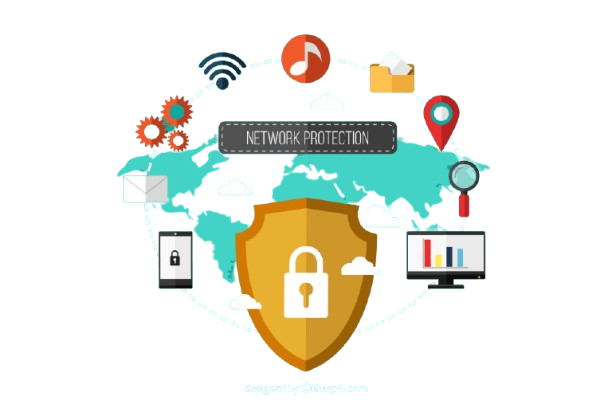Networking Technology Solutions
A Networking Technology Solution refers to a range of products, services, and strategies designed to support, optimize, and improve communication and data exchange between devices and systems within a network. These solutions are vital for businesses, organizations, and individuals to ensure reliable, efficient, and secure communication


How We Work?
Routers and Switches: Devices that manage the flow of data within a network. Routers direct data between different networks, while switches manage data traffic within a local area network (LAN).
Firewalls: Security devices that monitor and control incoming and outgoing network traffic based on predetermined security rules.
Cabling and Fiber Optics: Physical mediums such as Ethernet cables, fiber optics, and wireless connections (Wi-Fi) that connect various devices within a network.
Access Points: Devices that provide wireless network access to users within a certain range
Network Management Software (NMS): Tools that help monitor, configure, and optimize the performance of network devices. These include systems like SolarWinds, PRTG Network Monitor, and Nagios.
Performance Monitoring: Tools for tracking the speed, bandwidth, and health of the network to prevent downtime and ensure optimal performance.
Troubleshooting Tools: Solutions that help diagnose and resolve network issues such as latency, packet loss, or connectivity problems (e.g., Ping, Traceroute, Wireshark).
Wi-Fi Solutions: Advanced wireless technologies like Wi-Fi 6 and Wi-Fi 6E, offering higher speeds, better reliability, and improved support for multiple devices.
5G Networks: Emerging cellular networks designed for faster speeds and lower latency, enabling more devices to connect simultaneously, especially important for IoT (Internet of Things).
Mesh Networks: A type of Wi-Fi system that creates multiple interconnected nodes to provide consistent and widespread coverage, ideal for larger spaces.
Virtual Private Networks (VPN): Technology that allows remote users to securely connect to a network over the internet by encrypting data traffic.
Intrusion Detection and Prevention Systems (IDPS): Tools that detect and prevent unauthorized access or attacks on a network.
Network Access Control (NAC): Policies and tools to ensure that only authorized devices can access network resources.
Encryption: Technologies like SSL/TLS, IPsec, and end-to-end encryption to secure data in transit across networks.
- Cloud-Based Network Solutions: Services such as software-defined networking (SDN) and Network Function Virtualization (NFV) that enable network management through software and cloud environments.
- Hybrid Networks: Combining on-premises and cloud-based networks for flexibility, scalability, and cost savings.
Cloud Interconnection: Direct, secure connections between private data centers and public cloud providers for better performance and security.
- Network Infrastructure
- Network Management and Monitoring
- Wireless Networking
- Security Solutions
- Cloud Networking
VoIP (Voice over IP): Technology that allows voice communication over a network rather than traditional phone lines, providing cost savings and flexibility.
Video Conferencing Solutions: Tools like Zoom, Microsoft Teams, and Webex that use networking technology to enable remote collaboration.
Unified Messaging: Integrating various communication channels (email, SMS, VoIP, etc.) into a single platform.
Data Center Solutions: Technologies to create highly scalable, reliable, and efficient data centers for storing and managing large amounts of data.
Edge Computing: Moving computation and data storage closer to the data source (e.g., IoT devices), reducing latency and bandwidth usage.
Software-Defined Networking (SDN): A solution that allows network administrators to manage network resources using software applications, improving network flexibility and scalability.
Network Automation: Tools and processes that automate network configurations, monitoring, and management, improving operational efficiency.
AI and Machine Learning: Leveraging artificial intelligence for predictive network management, anomaly detection, and security threat identification.
SD-WAN is a solution that optimizes and secures the connection of branch offices and remote users to a central data center or cloud-based services over the internet. It allows businesses to optimize network performance and reduce costs by replacing traditional WANs with a software-based approach
IoT solutions enable the connectivity of various devices, sensors, and smart systems, often relying on specialized low-power wide-area networks (LPWANs), such as LoRa WAN, or leveraging existing Wi-Fi and cellular networks
This involves creating virtual networks over a physical infrastructure, which allows for easier management and scalability. Techniques like VLANs (Virtual Local Area Networks) and virtual switches help segment and manage traffic more effectively.

